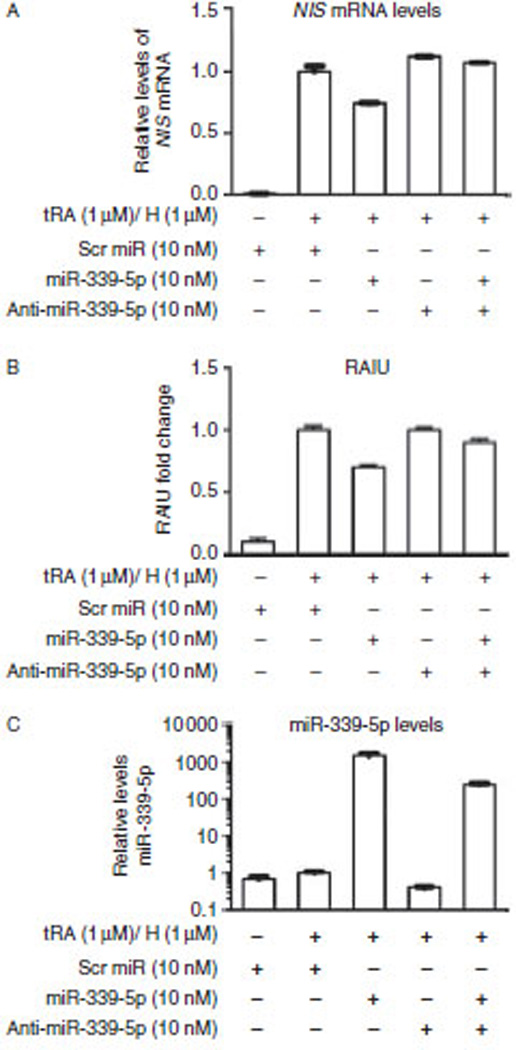Figure 2.

miR-339-5p reduces the levels of tRA/H-induced hNIS mRNA and hNIS-mediated RAIU in MCF-7 human breast cancer cells. (A) The results of RT-qPCR for hNIS indicated that overexpression of miR-339-5p resulted in a significant decrease in the levels of tRA/H-induced hNIS mRNA (26‰; P<0.0001). Relative fold changes in levels of hNIS mRNA normalized to levels of GAPDH mRNA are shown. (B) overexpression of miR-339-5p resulted in a significant decrease in tRA/H-induced hNIS-mediated RAIU activity (30‰; P<0.0001). Relative fold changes in RAIU activity are shown. (C) The results from RT-qPCR indicated that tRA/H had little effect on the levels of endogenous miR-339-5p and that the level of miR-339-5p increased by approximately 1000-fold upon transfection with oligo miR-339-5p. The increase in the level of miR-339-5p was reduced to approximately 100-fold by anti-miR-339-5p. Relative fold changes in the levels of miR-339-5p normalized to the levels of U6 snRNA are shown. (A, B and C) Scrambled oligo miRs or oligo miR-339-5p mimic were transfected into MCF-7 cells for 24 h at the same time as tRA/H treatment, then the cells were subjected to RNA extraction or RAIU. The results are representative of two independent experiments performed in triplicates and the mean±s.d. for each set of results is shown.
